Permitase Control Mark
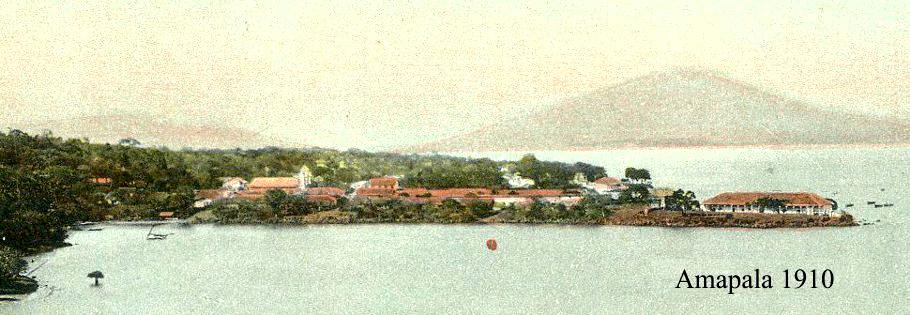 The permitase control mark was applied to stamps only in the port city of Amapala and only between the years of 1898 and 1903. It was first applied to a very limited number of stamps of the Arías issue after they were demonetized and the train stamps had not arrived. It is a mystery why the control mark continued to be applied to the train and Guardiola issues.
The permitase control mark was applied to stamps only in the port city of Amapala and only between the years of 1898 and 1903. It was first applied to a very limited number of stamps of the Arías issue after they were demonetized and the train stamps had not arrived. It is a mystery why the control mark continued to be applied to the train and Guardiola issues.
It may have been related to the political chaos and the depths of militarism at the time. Perhaps it had something to do with the contemporary excess of the train issue in the hands of the public. Lack of cash had led to some salaries of civil servants and orphan pensions being paid in such stamps. This excess combined with the fall of Amapala in March 1903 to revolution led to a second surge of these control marks on the 1903 and 1904 Guardiola issue.
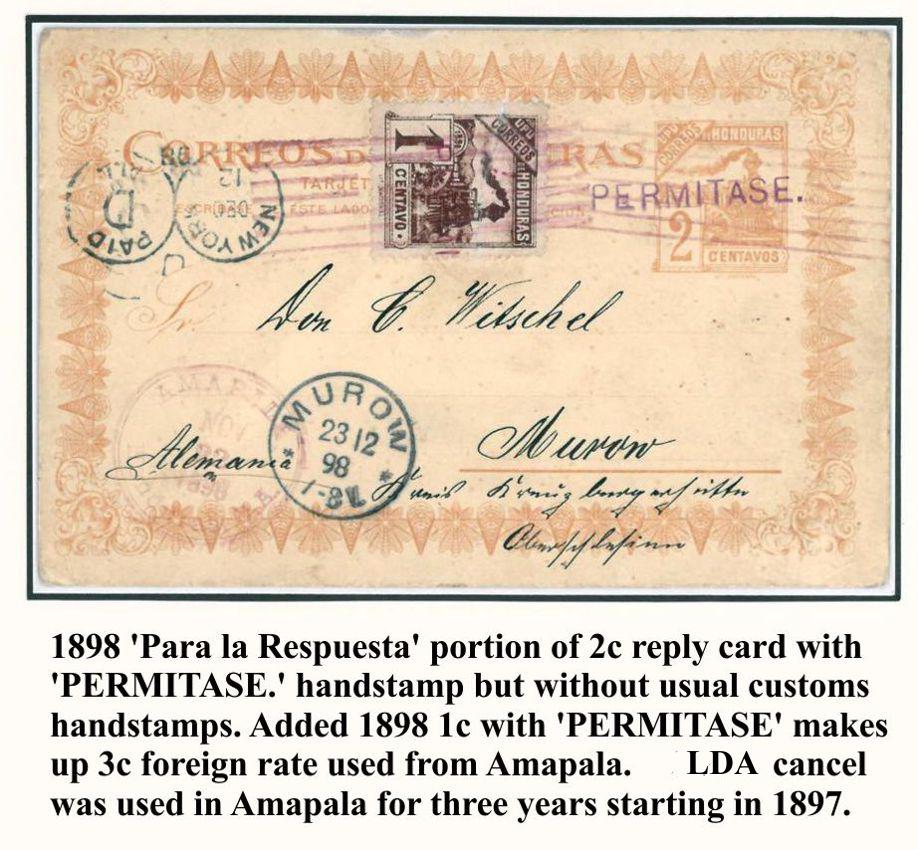
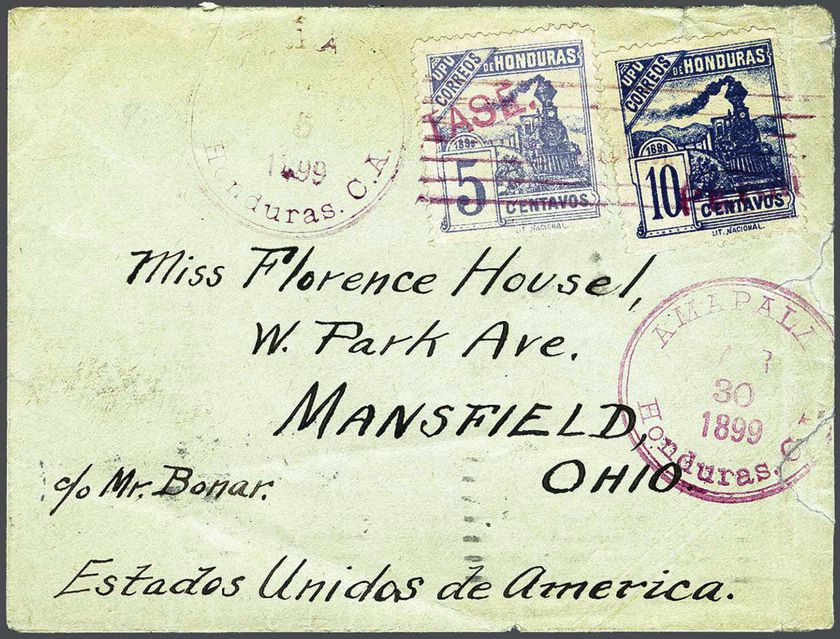 Permitase cover with very late usage of the LDA cancel
Permitase cover with very late usage of the LDA cancel
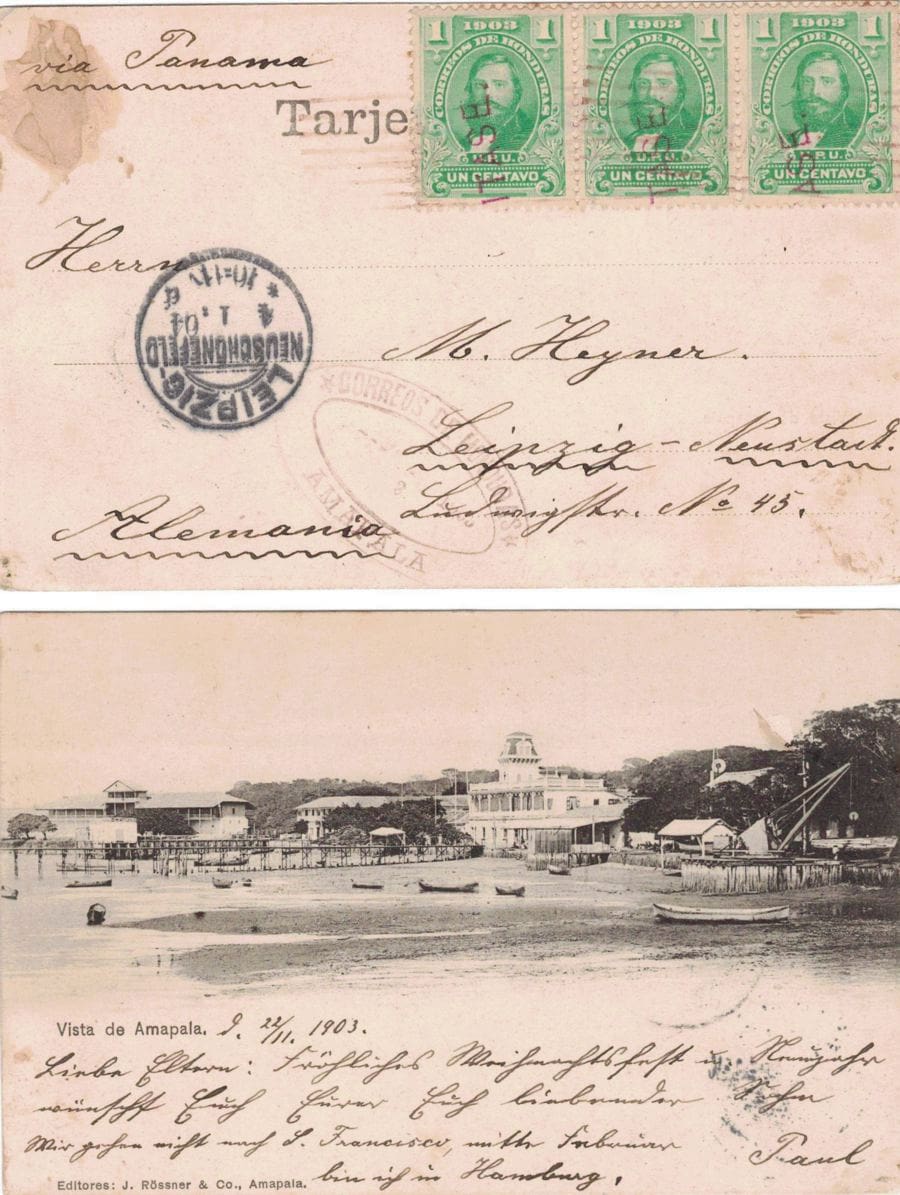 Permitase card from Anderson Collection. BH80 cancel and OD postal marking from November, 1903.
Permitase card from Anderson Collection. BH80 cancel and OD postal marking from November, 1903.

Permitase Frauds, Fakes and Counterfeits
This control mark is a counterfeiter's wildest dream. The stamps involved are inexpensive and the control mark is very simple. There are many types of fakes and the most common system of describing them is that of Brian Moorhouse. However, many control marks seem to have surfaced since the Moorhouse article was published in 1981. How can the genuine copies be identified?
We will start with the extreme scarcity of covers bearing the control mark. There simply are none available of the Arías issue, the rarest of the three. I have seen two of the train issue and few of the Guardiolas. We will conclude from this that used stamps are extremely rare and that mint stamps are moderately rare. This scarcity and ease of counterfeiting must lead us to be very conservative in issuing a genuine status, especially in view of the quantity of fakes being sold online as genuine by sellers extolling APS membership numbers. In fact we will reverse the usual approach and assume all such control marks are fake unless they meet specific traits. That is, guilty unless proven innocent in spite of august corporate credentials.
There seem to be two periods of general use in Amapala. An early period before the turn of the century. This included a few months of the Arias issue second printing and the first year of the Train issue in 1898. The second period centered around 1903 and the Guardiola issue. We will start with an image of a genuine first period post card of 1898 provided through the courtesy of Mr. Brian Moorhouse.

From this cover will be drawn the image of a genuine controlmark.

General Traits - Notice how the genuine word is somewhat straight and how the letters are consistantly thin and of a near consistant height. All the letters are sans serif. It measures 31.5 mm long from center of vertical bar in P to the vertical bar in the final E. It is 3.8 to 3.9 mm tall from the center of the bottom bar to the center of the upper bar on the initial E. Other demensions that may be useful are: vertical bar in P to nearest vertical bar in M = 12.5 mm; vertical bar in T to vertical bar in final E = 10.5 mm. Except for the one peso train stamp, the control mark is generally stamped horizontally across a pair of stamps and never contained in a single stamp. Genuine stamps possess the foregoing characteristics.
The following is a display of control mark varieties personally viewed and scanned. There are many fakes not categorized or described but with no available clear image. Two types have been added to the Moorhouse four because of their commonality and obvious nature. The writer continues searching for clear images of the missing types.
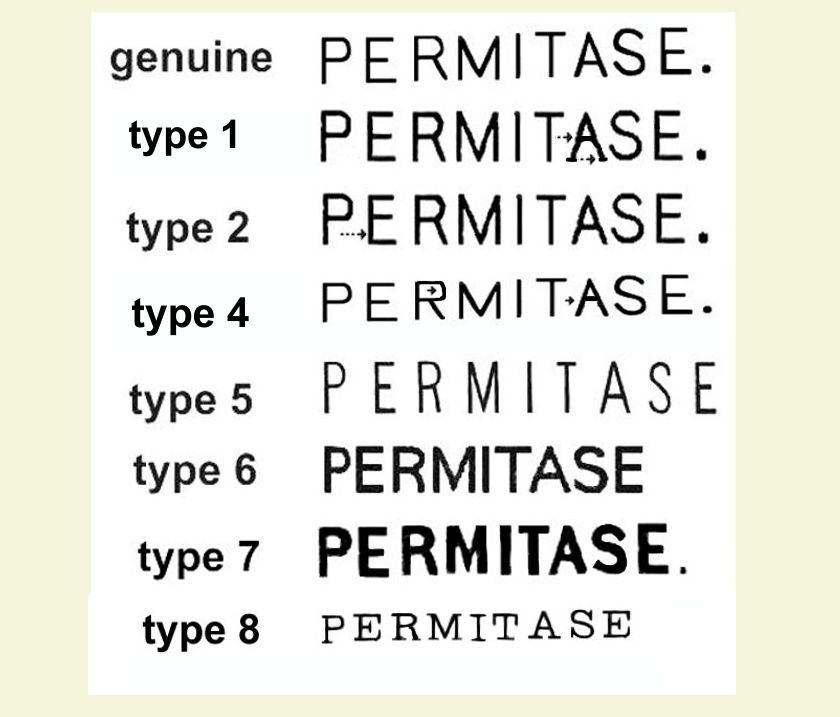
EXAMPLES
The ARIAS ISSUE -
This is the rarest of the genuine control marks. It is mostly found on the 20c and 30c values. A few 5c are recorded. It is found always in a distinctive purple on this issue.


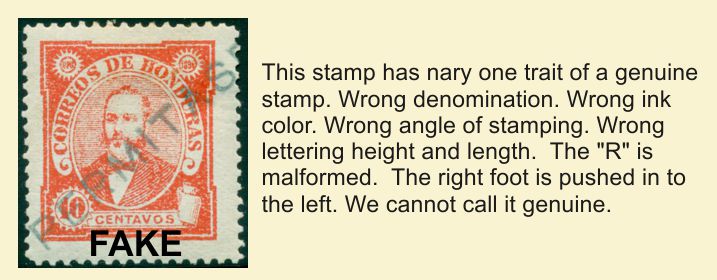
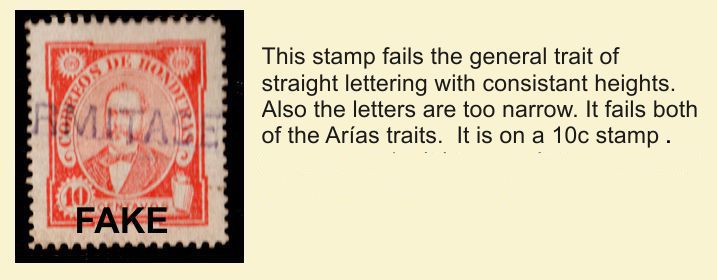

Somewhat more decorative is the type 8. Here we see it on the Arías top value. Why not put it on the 20c Arías? Maybe the counterfeiter didn't have any? Not generally seen on the four Arías counterfeits.
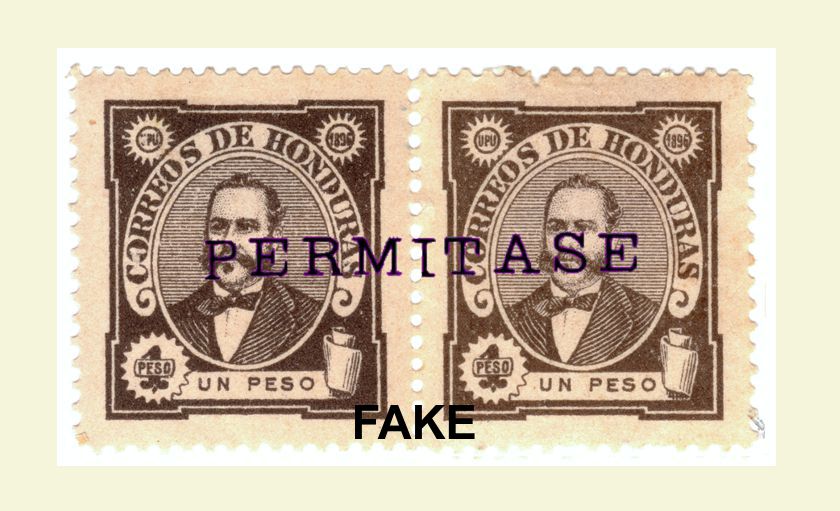
The TRAIN ISSUE - This is the least rare of the three stamps. The control mark is found in a variety of colors and the placement of the control mark can appear haphazard, especially on the one peso stamp. All values were handstamped and many ink colors were used. Postcards were also stamped along with a customs stamp.

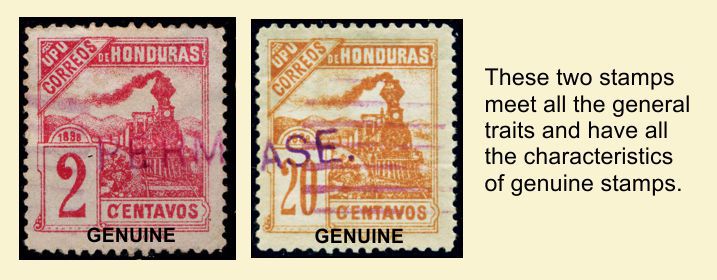
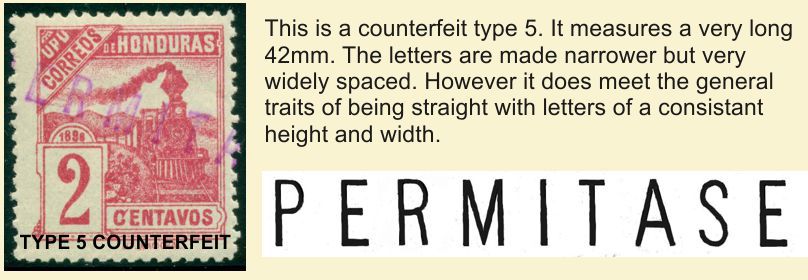
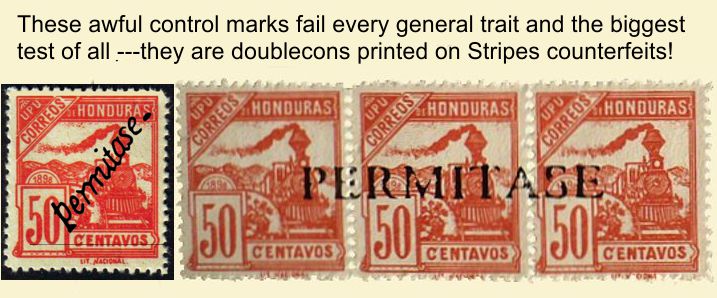
Alot like the type 6 but even thicker letters of irregular height. This is the type 7. It is usually a doublecon on a crooked lit counterfeit but not always. Notice the bad BH7 with serif letters on the 5c.
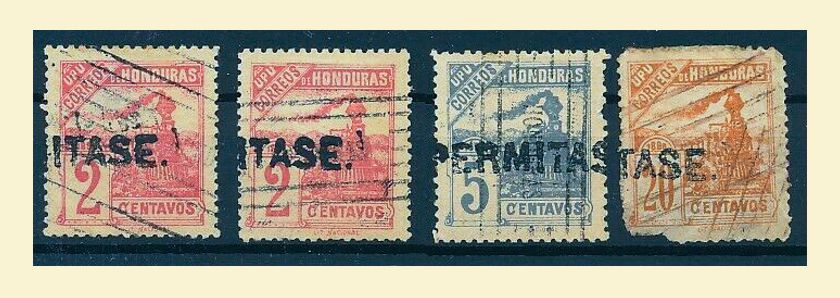
The Guardiola Issue - has similar traits but we will henceforth drop the trait of of straight lettering of consistant heights. All values were stamped and many colors were used. Even though there was a decree of 1902 which included their printing, strangely there are no postcards from this issue. Here is a very rare and genuine tourist card from the Anderson collection. It is dated late July of 1903 and bears a OD2 cancel and an early usage of the BH80C. The lettering spacing and thiness haven't changed but there is no consistancy in height.
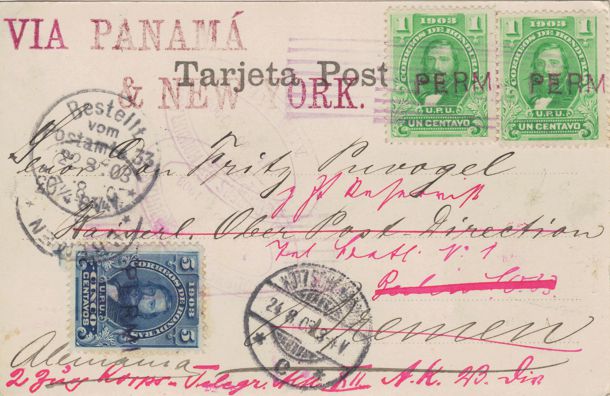
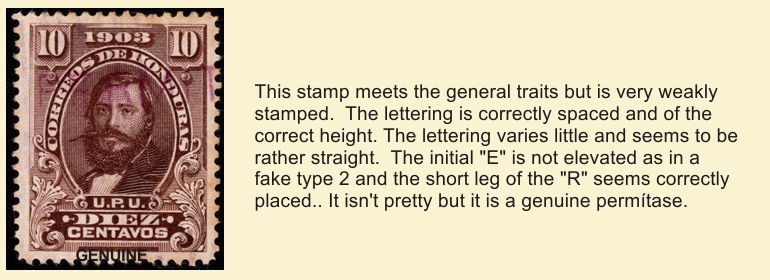
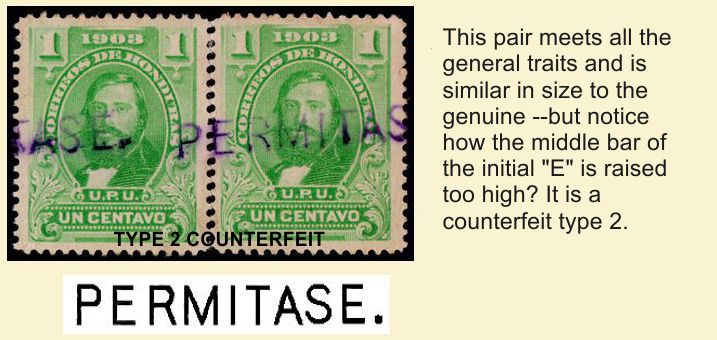

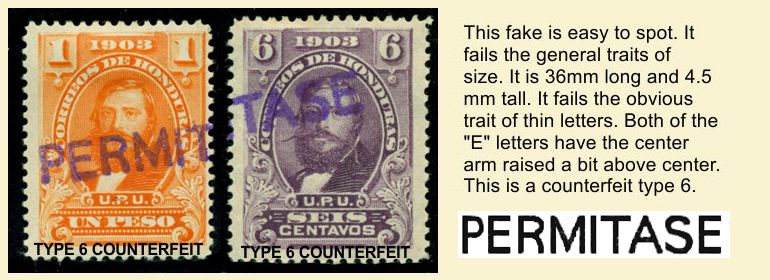
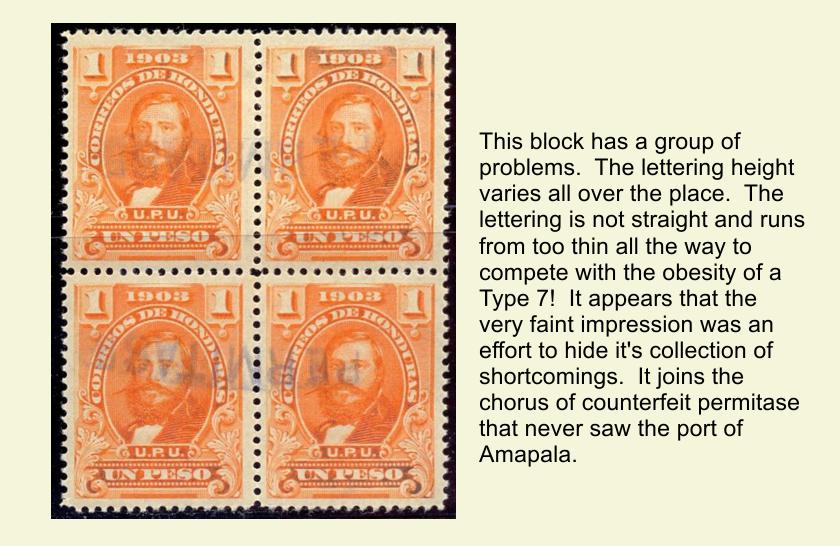

This one is easy. Pinkish PERMITASE was never used and PERMITASE was never used in Tegucigalpa.
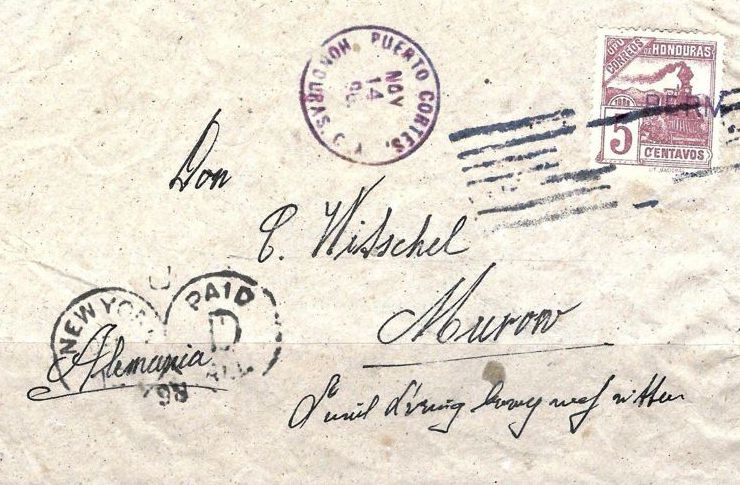 Counterfeit cover with stripes locamotive counterfeits. The L postal mark is well done. BH7 is terrible. Wrong postal rate!
Counterfeit cover with stripes locamotive counterfeits. The L postal mark is well done. BH7 is terrible. Wrong postal rate!
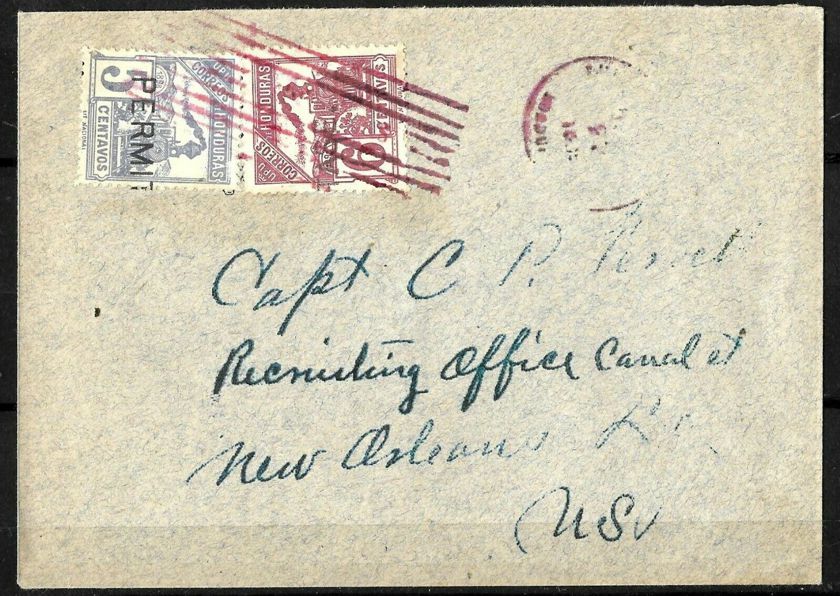
Nothing is correct on this bogus cover with a stripes counterfeit stamp.
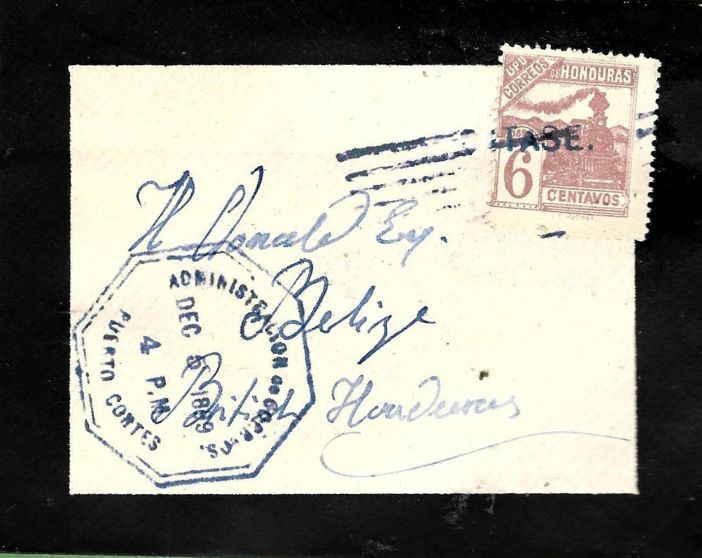 Handsome counterfeit mourning cover. I7 postal marking is well done. Terrible BH7 cancel. Wrong postal rate. Bad date counterfeit locomotive stamp.
Handsome counterfeit mourning cover. I7 postal marking is well done. Terrible BH7 cancel. Wrong postal rate. Bad date counterfeit locomotive stamp.
 Another from the same counterfeiter. Usual horrible BH7 and ridiculous postal rate. Bad
Date counterfeit locomotive stamp. We know the Permitase was applied to the stamps previous to sale. How could it spill on over the envelope?
Another from the same counterfeiter. Usual horrible BH7 and ridiculous postal rate. Bad
Date counterfeit locomotive stamp. We know the Permitase was applied to the stamps previous to sale. How could it spill on over the envelope?
What about pricing for the PERMITASE's? Find the price of the stamp or cover ignoring the PERMITASE. Figure that price doubled.
-----------------------------------------
Historia del surgimiento de "PERMITASE" by Alegría in Honduras Filatélica in June 1989 pps 809-831.
Honduras a Comparison of Genuine and Fake Permítase Handstamps by Moorhouse in Mainsheet October 1981.
Honduras Report by Washburn in the Oxcart spring 1992.
Permitase Handstamp by Wheatley in Mainsheet in June 1974 and March 1975.
Stamps of Honduras by Crouch in The Stamp Lover Magazine May 1912.
Riehl Collection.
8/24

